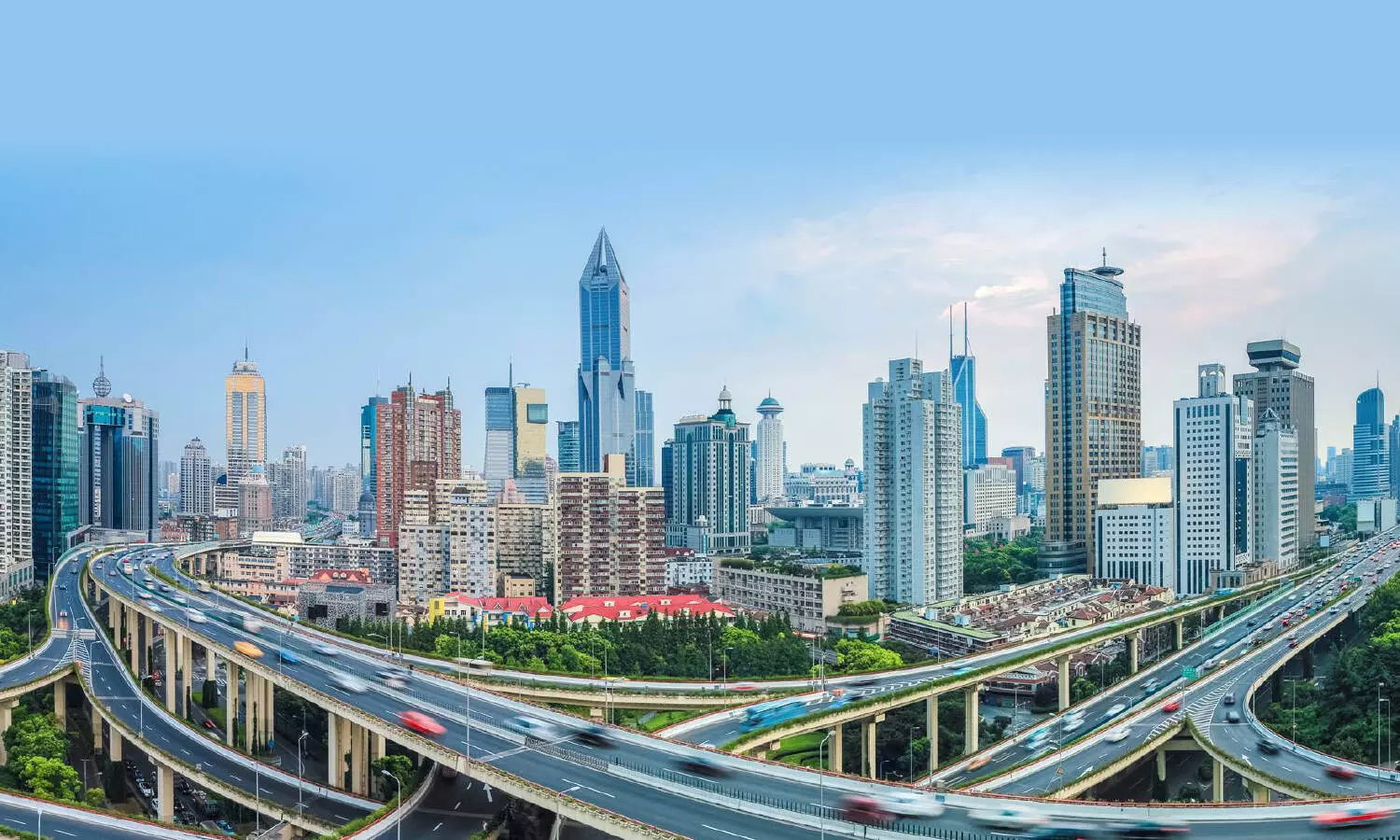- Home
- News
- Articles+
- Aerospace
- Artificial Intelligence
- Agriculture
- Alternate Dispute Resolution
- Arbitration & Mediation
- Banking and Finance
- Bankruptcy
- Book Review
- Bribery & Corruption
- Commercial Litigation
- Competition Law
- Conference Reports
- Consumer Products
- Contract
- Corporate Governance
- Corporate Law
- Covid-19
- Cryptocurrency
- Cybersecurity
- Data Protection
- Defence
- Digital Economy
- E-commerce
- Employment Law
- Energy and Natural Resources
- Entertainment and Sports Law
- Environmental Law
- Environmental, Social, and Governance
- Foreign Direct Investment
- Food and Beverage
- Gaming
- Health Care
- IBC Diaries
- In Focus
- Inclusion & Diversity
- Insurance Law
- Intellectual Property
- International Law
- IP & Tech Era
- Know the Law
- Labour Laws
- Law & Policy and Regulation
- Litigation
- Litigation Funding
- Manufacturing
- Mergers & Acquisitions
- NFTs
- Privacy
- Private Equity
- Project Finance
- Real Estate
- Risk and Compliance
- Student Corner
- Take On Board
- Tax
- Technology Media and Telecom
- Tributes
- Viewpoint
- Zoom In
- Law Firms
- In-House
- Rankings
- E-Magazine
- Legal Era TV
- Events
- Middle East
- Africa
- News
- Articles
- Aerospace
- Artificial Intelligence
- Agriculture
- Alternate Dispute Resolution
- Arbitration & Mediation
- Banking and Finance
- Bankruptcy
- Book Review
- Bribery & Corruption
- Commercial Litigation
- Competition Law
- Conference Reports
- Consumer Products
- Contract
- Corporate Governance
- Corporate Law
- Covid-19
- Cryptocurrency
- Cybersecurity
- Data Protection
- Defence
- Digital Economy
- E-commerce
- Employment Law
- Energy and Natural Resources
- Entertainment and Sports Law
- Environmental Law
- Environmental, Social, and Governance
- Foreign Direct Investment
- Food and Beverage
- Gaming
- Health Care
- IBC Diaries
- In Focus
- Inclusion & Diversity
- Insurance Law
- Intellectual Property
- International Law
- IP & Tech Era
- Know the Law
- Labour Laws
- Law & Policy and Regulation
- Litigation
- Litigation Funding
- Manufacturing
- Mergers & Acquisitions
- NFTs
- Privacy
- Private Equity
- Project Finance
- Real Estate
- Risk and Compliance
- Student Corner
- Take On Board
- Tax
- Technology Media and Telecom
- Tributes
- Viewpoint
- Zoom In
- Law Firms
- In-House
- Rankings
- E-Magazine
- Legal Era TV
- Events
- Middle East
- Africa

Asia’s Power Couple – Japan And India’s Unstoppable Rise, And Arbitration Opportunities In Singapore
Asia’s Power Couple – Japan And India’s Unstoppable Rise, And Arbitration Opportunities In Singapore

Asia’s Power Couple – Japan And India’s Unstoppable Rise, And Arbitration Opportunities In Singapore The ample common ground between India and Japan fosters a profound respect for heritage and a collective identity that prioritizes harmony, respect, and mutual care. In the dynamic tapestry of global economic partnerships, the Japan-India trade corridor emerges as a striking example...
To Read the Full Story, Subscribe to Legal Era News
Access Exclusive Legal Era Stories, Editorial Insights, and Expert Opinion.
Already a subscriber? Sign in Now
Asia’s Power Couple – Japan And India’s Unstoppable Rise, And Arbitration Opportunities In Singapore
The ample common ground between India and Japan fosters a profound respect for heritage and a collective identity that prioritizes harmony, respect, and mutual care.
In the dynamic tapestry of global economic partnerships, the Japan-India trade corridor emerges as a striking example of strategic collaboration which is both unique and profitable. Rooted in a deep-seated commitment to mutual growth and stability, this bilateral relationship is a testament to the power of visionary cooperation amidst the complex geopolitics in Asia. As one of Asia’s top arbitration hubs, Singapore is uniquely poised to capitalise on the burgeoning partnership between these two Asian titans.
Historical and Cultural Similarities between Japan and India
India and Japan, who share a “Special Strategic and Global Partnership”1 and who are both members of the Quadrilateral Security Dialogue, or Quad,2 are natural allies, with historical and cultural similarities built and strengthened over centuries.
Historically, Japan and India’s relationship is said to have started in the 6th century, with the introduction of Buddhism.3 The Shichifukujin or the seven lucky gods of Japan have their roots in Hindu traditions.4
In recent times, the late Japanese Prime Minister Shinzo Abe delivered his famous “The Confluence of Two Seas” speech in the Indian parliament,5 where he expressed hope for the Japanese and Indian people to recognize their shared interests, and in which he called for the two countries’ leaders to take an expansive Indo-Pacific view towards Asian security.6 Indian Prime Minister Narendra Modi also penned a touching tribute upon the passing of PM Abe, entitled “My friend, Abe-san”, in which he mourned the loss of a great visionary of the world.7

Indian and Japanese cultures share profound similarities, rooted in their mutual prioritisation of family values, reverence for elders, and a robust sense of community. In addition, both cultures are known worldwide for their unique foods, art, etiquette, and traditions. The ample common ground between them fosters a profound respect for heritage and a collective identity that prioritizes harmony, respect, and mutual care.
For Japan, India represents an expanding market for its exports, including electronics, machinery, and infrastructure technology, as well as a strategic ally in its quest for a balanced geopolitical stance in Asia
Strategic Foundations to Japan-India trade corridor
Due to this strong foundation, the Japan-India trade corridor is built upon a pillar of mutual interests and complementary agendas. Japan, known for its technological prowess and advanced infrastructure capabilities, has found an ideal partner in India, a country with vast market potential, abundant labour, and an urgent need for infrastructural development.
Central to their partnership is the 2011 Comprehensive Economic Partnership Agreement (“CEPA”).8 Through the reduction of tariffs on numerous goods and the simplification of business processes, the agreement has propelled the bilateral trade between the two nations to unprecedented levels, achieving a total of US$21.95 billion in the financial year 2022-23.9 India’s main exports to Japan are refined petroleum, crustaceans and raw aluminum, whereas Japan’s main exports to India are precious metal compounds, refined copper and motor vehicles, parts and accessories.10
One of the most ambitious manifestations of this partnership is the Delhi-Mumbai Industrial Corridor (“DMIC”), a mega-infrastructure project aimed at transforming India’s economic landscape. Funded significantly by Japanese investment, the DMIC seeks to develop industrial zones, smart cities, and freight lines, effectively bridging the gap between India’s urban centers and its manufacturing sector.11 Another example is the Mumbai-Ahmedabad High-Speed Rail (“MAHSR”) project (also known as the Bullet Train Project) which aims to significantly reduce travel time between Mumbai and Ahmedabad from the current 7-8 hours to approximately 2 hours, facilitating enhanced connectivity and economic development between the two cities. The approximately US$14 billion project has been financed substantially through friendly loans from Japan, and built using Japan’s renowned Shinkansen technology.
There has also been a growing trend of Indian companies and employees moving to Japan, with 113 Indian companies now operating in Japan and nearly 50,000 Indian nationals residing and working there.12 India’s net foreign direct investment in Japan now amounts to US$91 million.13
A Vision for the Future
The economic implications of the Japan-India trade corridor are undoubtedly profound. For Japan, India represents an expanding market for its exports, including electronics, machinery, and infrastructure technology, as well as a strategic ally in its quest for a balanced geopolitical stance in Asia. For India, Japanese investment and technological transfer are invaluable accelerants for its economic modernization and growth trajectory.
As the global economic landscape evolves, the success of the Japan-India trade corridor offers a compelling blueprint for international cooperation. It stands as a beacon of how two distinct nations can transcend their differences, align their interests, and forge a partnership that is not only profitable but also transformative.
Opportunities for International Arbitration Practitioners in Singapore
The growing and significant collaboration between Japan and India, particularly in ambitious projects like the MAHSR, presents a unique opportunity for international arbitration practitioners, especially those practicing their craft in Singapore.
Both Japanese and Indian parties hold Singapore in high regard, and commonly choose Singapore as a neutral and strategic seat for resolving any disputes among them. Indian parties, in particular, have consistently been the Singapore International Arbitration Centre’s most frequent foreign users.14 Indian and Japanese law firms have also demonstrated substantial commitment to Singapore by establishing offices, alliances and networks in the city-state.15
The reasons for this are obvious - Singapore’s exceptional arbitration infrastructure, robust legal system, unwavering commitment to the rule of law, its renowned impartiality and effectiveness, and its supportive government and courts collectively establish Singapore as the foremost international arbitration seat in Asia.
As the economic interplay between Japan and India intensifies, so does the potential for disputes between Japanese and Indian parties to be resolved by arbitration in Singapore.
Conclusion
In conclusion, the Japan-India trade corridor is more than an economic initiative; it is a testament to the enduring power of strategic collaboration. As both countries continue to navigate the challenges and opportunities of the 21st century, their partnership offers valuable lessons on the importance of shared vision, mutual respect, and the relentless pursuit of progress. Incorporating Singapore into this dynamic equation, particularly through its role as a preferred arbitration hub, only amplifies the potential for success. The future of all three nations isn’t just bright – it’s shimmering!
Disclaimer – The views expressed in this article are the personal views of the authors and are purely informative in nature.
2. https://www.dfat.gov.au/international-relations/regional-architecture/quad
3. https://www.mofa.go.jp/region/asia-paci/india/data.html
4. https://www.mea.gov.in/Portal/ForeignRelation/Japan_-_Bilateral_Brief_MEA_Website_Oct_2023.pdf
5. https://www.mofa.go.jp/region/asia-paci/pmv0708/speech-2.html
6. https://www.economist.com/asia/2023/03/19/fear-of-china-is-pushing-india-and-japan-into-each-others-arms?utm_medium=cpc.adword.pd&utm_source=google&utm_campaign=a.io_apac_freetrial&utm_conte nt=conversion.non-brand.anonymous.apac_sg_en_free-trial_na_non-brand_google_subs_pmax_other_na_na&gad_source=1&gclid=Cj0KCQjwwYSwBhDcARIsAOyL0fjcRE5 aiJ53q92vJOsogTNB_ujzvxSbv53GhkzvuBsW-TnlzQEwAjkaAk2eEALw_wcB&gclsrc=aw.ds
7. https://www.japantimes.co.jp/opinion/2022/07/12/commentary/japan-commentary/friend-abe-san-modis-tribute-shinzo-abe
8. https://www.mofa.go.jp/region/asia-paci/india/epa201102/pdfs/ijcepa_ba_e.pdf
9. https://www.india-briefing.com/news/india-japan-trade-investment-data-fy2023-new-frontier-areas- cooperation- 29096.html/#:~:text=India%20and%20Japan%20enjoy%20a,billion%20in%20FY%202022%2D23.
10. https://www.mea.gov.in/Portal/ForeignRelation/Japan_-_Bilateral_Brief_MEA_Website_Oct_2023.pdf
11. https://hcisingapore.gov.in/pdf/event/dmic_presentation_singapore_japan_visit_may_2013.pdf
12. https://www2.deloitte.com/content/dam/Deloitte/in/Documents/finance/in-India-Japan-Trade-Relations- report-noexp.pdf
13. https://www.india-briefing.com/news/india-japan-trade-investment-data-fy2023-new-frontier-areas- cooperation- 29096.html/#:~:text=India%20and%20Japan%20enjoy%20a,billion%20in%20FY%202022%2D23.
14. https://siac.org.sg/wp-content/uploads/2023/04/SIAC_AR2022_Final-For-Upload.pdf
15. https://asialawportal.com/singapore-an-emerging-legal-hub-in-asia


